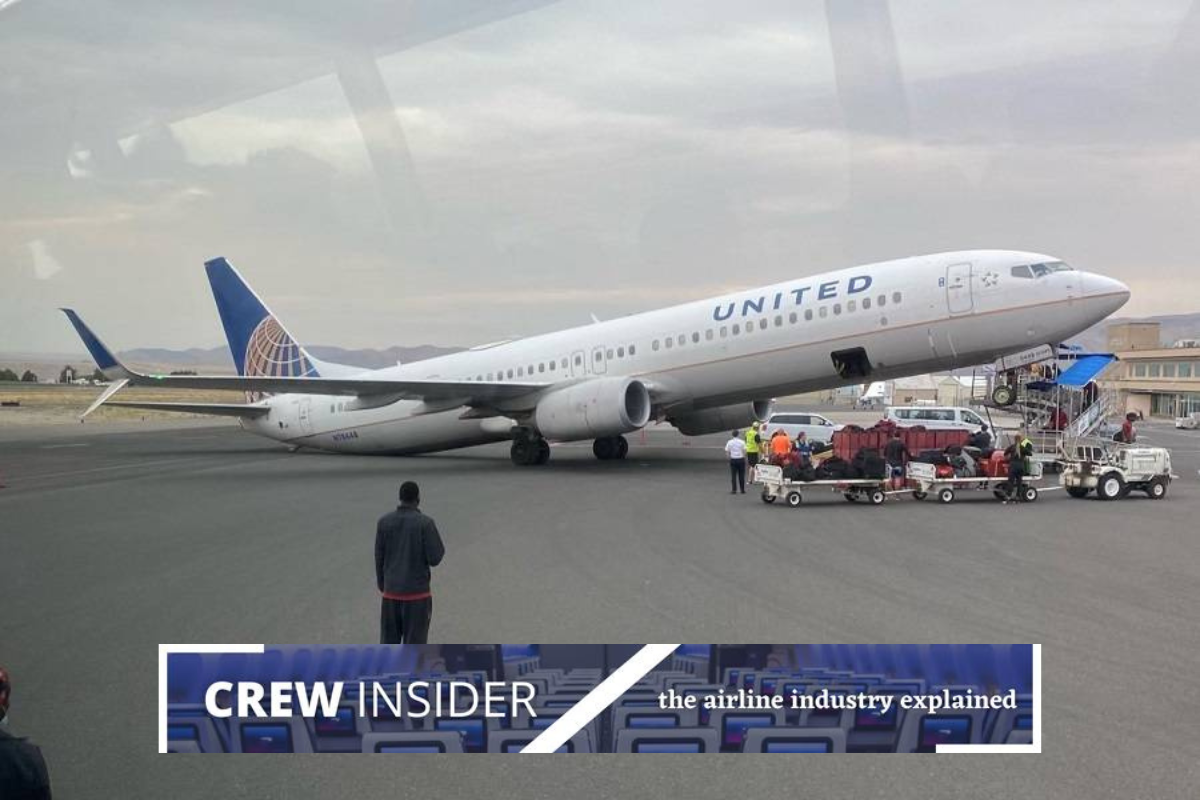
Crew Insider is our series of informative articles that answer some of the most common and less common questions about the aviation industry from the point of view of an industry insider. Our question answerer-in-chief is Mateusz Maszczynski, who has worked in the airline industry for nearly two decades and has honed his expertise in the field through this blog since 2015.
Considering that flying is by far the safest form of mass public transportation, with the odds of dying in a plane crash currently standing at an incredibly low 1 in 11 million, there sure are some oddities about airline safety that sometimes have me scratching my head as to why these situations are still allowed to happen.
And one such eccentricity of safety in the airline industry is the possibility that a plane could suddenly tip onto its tail when passengers stand up too quickly after the plane arrives at the gate.
Okay, that makes the problem sound a little too common and uncontrollable, but it’s a risk that does exist, and tail-tip incidents are by no means unheard of.
I got to thinking about this peculiarity when someone recently shared their near-trail-tip accident story on Reddit. The incident involved a Frontier Airlines flight that had just arrived at the gate in Denver, and as you might expect, everyone stood up and started gathering their bags from the overhead bins.
At this point, a “mildly frazzled” sounding flight attendant got on the intercom and urged everyone stood at the back of the plane to start moving forward as quickly as possible.
The problem was that there was nowhere for passengers to go. The aisle was blocked by other passengers and the situation was beginning to get serious.
The distressed flight attendant told everyone over the intercom: “Passengers, please move as quickly as possible to the front of the plane to help bring the nose down. We are tipping over!!!”
“Please cooperate as quickly as possible, we do not want the plane to tip over,” the crew member added.
In the end, the flight attendants managed to ‘cram’ people towards the front of the plane which averted a tail tip and passengers were then allowed to deplane in small groups of ten.
So, what could have caused this? It’s a pretty simple answer, although one that still catches airline pilots and ground crew from time to time. In very basic terms, there was a weight imbalance between the forward and aft cargo holds and if passenger deplaning wasn’t managed very carefully, the aircraft could have tipped on its tail.
There are various reasons why this might happen, including when ground crews sometimes accidentally start offloading cargo from the forward cargo hold first, meaning that the back of the aircraft is suddenly much heavier and gravity takes over.
It could also be that, for whatever reason, the weight of the cargo in the aft cargo hold is a lot heavier than the cargo being carried in the forward hold.
There are, of course, ways to mitigate the risk of a tail tip accident and this normally involves unloading the aft cargo hold first… although this isn’t always possible and sometimes more careful management is required.
In fact, it’s not unheard of for passengers to be instructed to remain seated once the plane has arrived at the gate so that ground handling teams can remove some particularly heavy item of cargo from the aft hold before passenger deplaning can safely start.
Some Boeing 737 aircraft even come with a special tail support stand that attaches to the tail during deplaning to prevent a tail tip accident from taking place. Interestingly, however, the Airbus A320 series of single-aisle aircraft has never had this feature.
Perhaps unsurprisingly, the risk of a tail tip accident is greater on single-aisle aircraft (it’s almost unheard of on widebody aircraft), and the longer the aircraft, the bigger the risk. The Airbus A321 aircraft – coming in at nearly 45 meters long – can be particularly prone to a tail tip, although careful management of cargo unloading should mitigate this risk.
Thankfully, most tail tip accidents look much more dramatic than they are in reality, and airplanes are usually quickly corrected and returned to service. In most cases, passengers also escape any injury.
Related
Mateusz Maszczynski honed his skills as an international flight attendant at the most prominent airline in the Middle East and has been flying ever since... most recently for a well known European airline. Matt is passionate about the aviation industry and has become an expert in passenger experience and human-centric stories. Always keeping an ear close to the ground, Matt's industry insights, analysis and news coverage is frequently relied upon by some of the biggest names in journalism.







